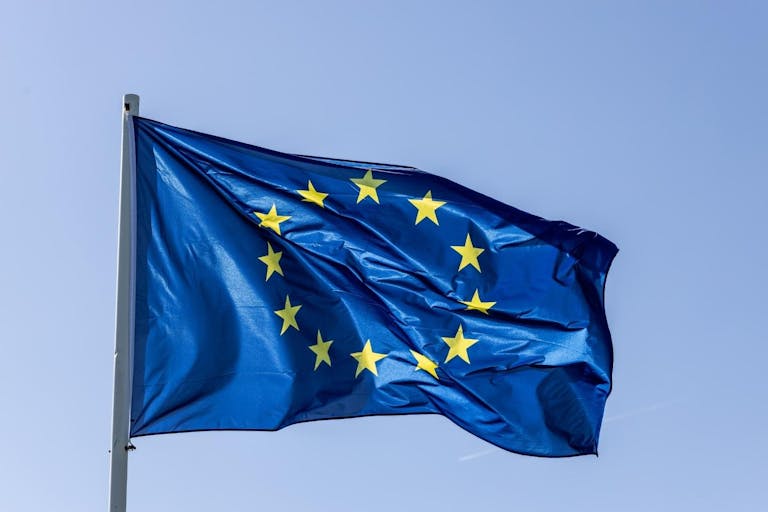
EU Parliament votes in favor of abortion travel fund
Bridget Sielicki
·
Belgian teenager euthanized days after 16th birthday
A teenage girl in Belgium was euthanized, and afterwards, had her organs donated.
Le Soir reported that the girl, nicknamed “Eva” by the press, died just days after her 16th birthday. She had been diagnosed with a brain tumor, and felt that she no longer wanted to fight the disease. “I’m tired of it,” she said.
Her parents seemed to support her choice to be killed as well. “In our misfortune, we were lucky to have a wonderful year: she pushed us forward, never complained, ever, not once,” her father told Le Soir. “And we will have been lucky enough to be able to say goodbye to our child.”
Euthanasia for children was legalized in Belgium in 2014, and now, Eva has become one of its victims. Professor François Damas explained that, in Eva’s case, the process was more difficult.
“What is essential during euthanasia is support, the last farewell ceremony, the last ritual of sharing, at the moment when the person dies. The problem with euthanasia followed by organ harvesting is that we don’t have much time between death and harvesting, otherwise the grafts are lost,” he said, explaining that they commit two separate procedures instead. “At the time of the injection, instead of anesthetizing with a massive dose (which I do during euthanasia), I inject a normal dose of anesthesia, and at that point I ask the family to leave the room. Then a resuscitation team intubates the patient, ventilates her before taking her to the operating room. It is only later, when she is installed in the operating room, that everything is ready, that the anesthesia will be deepened, the respirator will be stopped so as to let the person die and declare them dead, before starting the organ harvesting procedure.”
Though typically the process only takes an hour, for Eva, it took a whopping 36 hours.
Article continues below
Dear Reader,
In 2026, Live Action is heading straight where the battle is fiercest: college campuses.
We have a bold initiative to establish 100 Live Action campus chapters within the next year, and your partnership will make it a success!
Your support today will help train and equip young leaders, bring Live Action’s educational content into academic environments, host on-campus events and debates, and empower students to challenge the pro-abortion status quo with truth and compassion.
Invest in pro-life grassroots outreach and cultural formation with your DOUBLED year-end gift!
READ: Transgender-identifying individual seeks euthanasia for post-surgical pain and regret
“Exams had to be carried out to ensure the reliability of the organs,” he said. “And we decided not to do these examinations before euthanasia because they would subject young Eva to transfers, transports that she could no longer tolerate and which made her significantly nauseous. We weren’t going to put her through this kind of discomfort, or even torture, when she was already in major difficulties.”
Ultimately, Eva’s liver, kidney, and lungs were harvested for donation. “The lungs are a sample that is done in a more exceptional manner, because they are often damaged following prolonged resuscitation. And pulmonary pathologies are difficult to treat,” Damas said. “The heart was available, but unfortunately there was no recipient. There were only tall male recipients, to whom the girl’s heart would not have suited.”
Canada is currently the world leader in organ donation after euthanasia (ODE), and a study published this year in the American Journal of Transplantation noted there are serious ethical issues. “ODE raises some important ethical concerns involving patient autonomy, the link be-tween the request for MAiD and the request to donate organs and the increased burden placed on seriously ill MAiD patients,” the study noted. People considering euthanasia can feel pressured to go through with it, knowing that other people’s lives rely on their own being taken.
“[T]he potentially influenceable patient (in contrast to the withdrawal of life-sustaining therapy patient) not only decides on providing and maintaining donor pathway consent but also on maintaining the MAID death pathway consent. There is an inevitable intertwining of care pathways and ongoing interactions with the OPO representatives/donor coordinator might influence the donor to maintain consent for MAiD and donation.”
Belgium is one of the world’s leaders in euthanasia; in 2022, deaths from it rose by nearly 10%, and accounted for 2.5% of all deaths in Belgium. Additionally, in the 20 years since it was legalized, over 27,000 people have been killed.

Live Action News is pro-life news and commentary from a pro-life perspective.
Contact editor@liveaction.org for questions, corrections, or if you are seeking permission to reprint any Live Action News content.
Guest Articles: To submit a guest article to Live Action News, email editor@liveaction.org with an attached Word document of 800-1000 words. Please also attach any photos relevant to your submission if applicable. If your submission is accepted for publication, you will be notified within three weeks. Guest articles are not compensated (see our Open License Agreement). Thank you for your interest in Live Action News!

Bridget Sielicki
·
International
Bridget Sielicki
·
International
Cassy Cooke
·
Human Interest
Nancy Flanders
·
Guest Column
Rai Rojas
·
International
Angeline Tan
·
International
Cassy Cooke
·
Pop Culture
Cassy Cooke
·
Politics
Cassy Cooke
·
Politics
Cassy Cooke
·
Pop Culture
Cassy Cooke
·